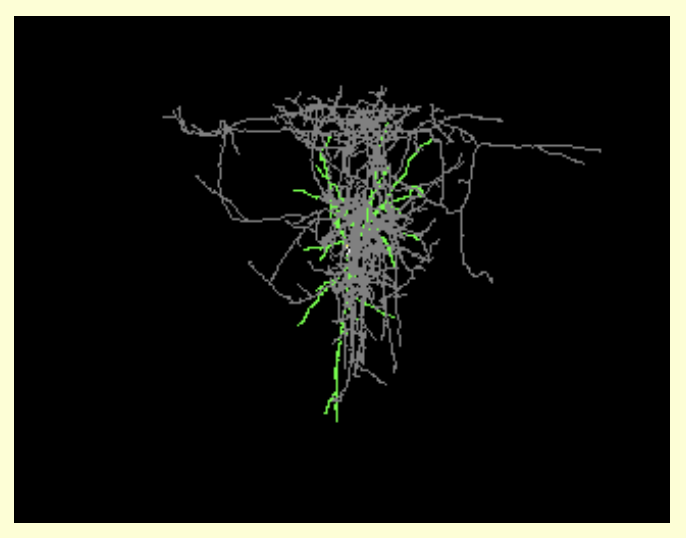URL: http://www.norc.org/Research/Projects/Pages/national-social-life-health-and-aging-project.aspx
Proper Citation: National Social Life Health and Aging Project (NSHAP) (RRID:SCR_008950)
Description: A longitudinal, population-based study of health and social factors, aiming to understand the well-being of older, community-dwelling Americans by examining the interactions among physical health and illness, medication use, cognitive function, emotional health, sensory function, health behaviors, social connectedness, sexuality, and relationship quality. NSHAP provides policy makers, health providers, and individuals with useful information and insights into these factors, particularly on social and intimate relationships. The study contributes to finding new ways to improve health as people age. In 2005 and 2006, NORC and Principal Investigators at the University of Chicago conducted the first wave of NSHAP, completing more than 3,000 interviews with a nationally representative sample of adults aged 57 to 85. In 2010 and 2011, nearly 3,400 interviews were completed for Wave 2 with these Wave 1 Respondents, Wave 1 Non-Interviewed Respondents, and their spouses or cohabiting romantic partners. The second wave of NSHAP is essential to understanding how social and biological characteristics change. NSHAP, by eliciting a variety of information from respondents over time, provides data that will allow researchers in a number of fields to examine how specific factors may or may not affect each other across the life course. For both waves, data collection included three measurements: in-home interviews, biomeasures, and leave-behind respondent-administered questionnaires. The face-to-face interviews and biomeasure collection took place in respondents'''' homes. NSHAP uses a national area probability sample of community residing adults born between 1920 and 1947 (aged 57 to 85 at the time of the Wave 1 interview), which includes an oversampling of African-Americans and Hispanics. The NSHAP sample is built on the foundation of the national household screening carried out by the Health and Retirement Study (HRS) in 2004. Through a collaborative agreement, HRS identified households for the NSHAP eligible population. A sample of 4,400 people was selected from the screened households. NSHAP made one selection per household. Ninety-two percent of the persons selected for the NSHAP interview were eligible. For Wave 2 in 2010 and 2011, NSHAP returned to Wave 1 Respondents and eligible non-interviewed respondents from Wave 1 (Wave 1 Non-Interviewed Respondents). NSHAP also extended the Wave 2 sample to include the cohabiting spouses and romantic partners of Wave 1 Respondents and Wave 1 Non-Interviewed Respondents. Partners were considered to be eligible to participate in NSHAP if they resided in the household with the Wave 1 Respondent/Wave 1 Non-Interviewed Respondent at the time of the Wave 2 interview and were at least 18 years of age. Wave I biomeasures: height; weight; waist circumference; blood pressure; smell; taste; vision; touch; respondent-administered vaginal swabs; oral mucosal transudate (OMT) for HIV-1 antibody screening; saliva; ����??get up and go����??; and blood spots. Technological advances in biomeasure collection methods have decreased respondent burden and increased ease of collection, storage, and yield of various biomeasures for the second wave of NSHAP. Wave II biomeasures: anthropometrics, including height, hip and waist circumference, and weight; cardiovascular function, including blood pressure, heart rate variability, and pulse; 2 of the 3 components of the short physical performance battery (SPPB) including chair stands and a timed walk; sensory function including smell; and actigraphy. In addition, we collect dried blood spots, microtainer blood, passive drool and salivettes, urine, and respondent-administered vaginal swabs, each of which are analyzed using multiple assays for a variety of measures and rationales. Furthermore, we assess respondents����?? cognition using the Montreal Cognitive Assessment (MoCA). Data Availability: NSHAP data made available to the public does not contain any identifiable respondent information and uses code numbers instead of names for all data. De-identified data from the 2005 and 2006 interviews are available to researchers through the National Archive of Computerized Data on Aging, located within Inter-University Consortium for Political and Social Research (ICPSR). Data from the Wave 2 interviews in 2010 and 2011 will be available in the summer of 2012. * Dates of Study: 2005-2006, 2010-2011 * Study Features: Biospecimens, Anthropometric Measures * Sample Size: ** Wave 1: 3,005 ** Wave 2: 3,377 Links: * ICPSR: http://www.icpsr.umich.edu/icpsrweb/ICPSR/studies/20541
Abbreviations: NSHAP
Synonyms: National Social Life Health and Aging Project
Resource Type: biomaterial supply resource, material resource
Defining Citation: PMID:19837963
Keywords: social life, health, man, woman, late adult human, middle adult human, longitudinal, social support, personal relationship, social, physical health, illness, cognitive function, emotional health, sensory function, social connectedness, sexuality, relationship quality, intimate relationship, biospecimen, anthropometric measure, interview, biomeasure, questionnaire, african-american, hispanic, minority, marriage, anxiety, attitude, body height, body weight, doctor visit, drug, ethnicity, family size, health attitude, health problem, health services utilization, health status, intimate partner, life satisfaction, medical evaluation, medical procedure, medication, menopause, mental health, morbidity, nutrition, quality of life, sexual activity, cohabitation, social network, demographic, prevention, cognition, well-being, survey, sleep, actigraphy, healthy aging, vaginal swab, blood spot, saliva, blood, urine
Expand Allis listed by |
|
is listed by |
Inter-university Consortium for Political and Social Research (ICPSR) |
is related to |
|
has parent organization |
|
has parent organization |
We found {{ ctrl2.mentions.total_count }} mentions in open access literature.
We have not found any literature mentions for this resource.
We are searching literature mentions for this resource.
Most recent articles:
{{ mention._source.dc.creators[0].familyName }} {{ mention._source.dc.creators[0].initials }}, et al. ({{ mention._source.dc.publicationYear }}) {{ mention._source.dc.title }} {{ mention._source.dc.publishers[0].name }}, {{ mention._source.dc.publishers[0].volume }}({{ mention._source.dc.publishers[0].issue }}), {{ mention._source.dc.publishers[0].pagination }}. (PMID:{{ mention._id.replace('PMID:', '') }})
A list of researchers who have used the resource and an author search tool
Find mentions based on location

{{ ctrl2.mentions.errors.location }}
A list of researchers who have used the resource and an author search tool. This is available for resources that have literature mentions.
No rating or validation information has been found for National Social Life Health and Aging Project (NSHAP).
No alerts have been found for National Social Life Health and Aging Project (NSHAP).
Source: SciCrunch Registry





